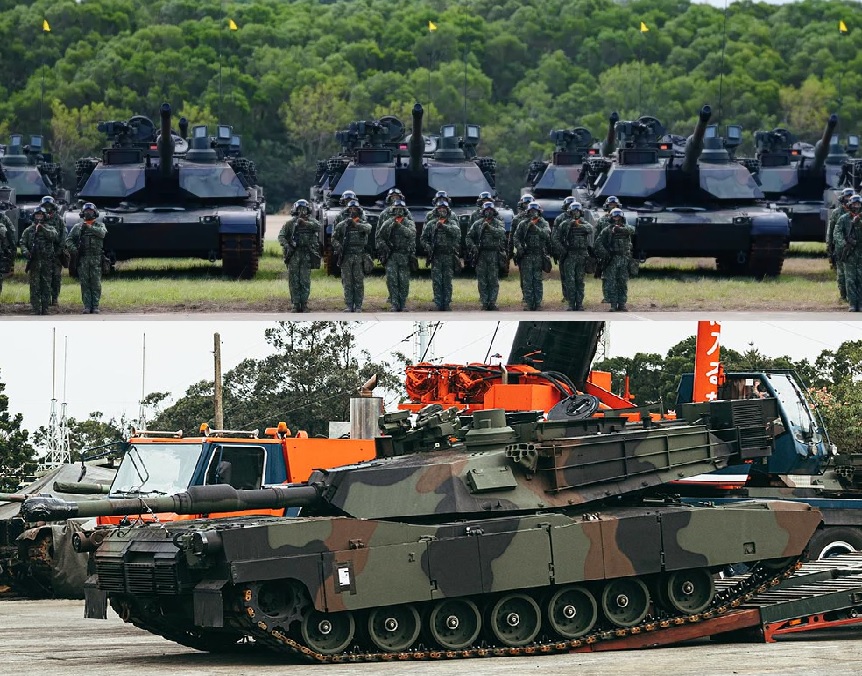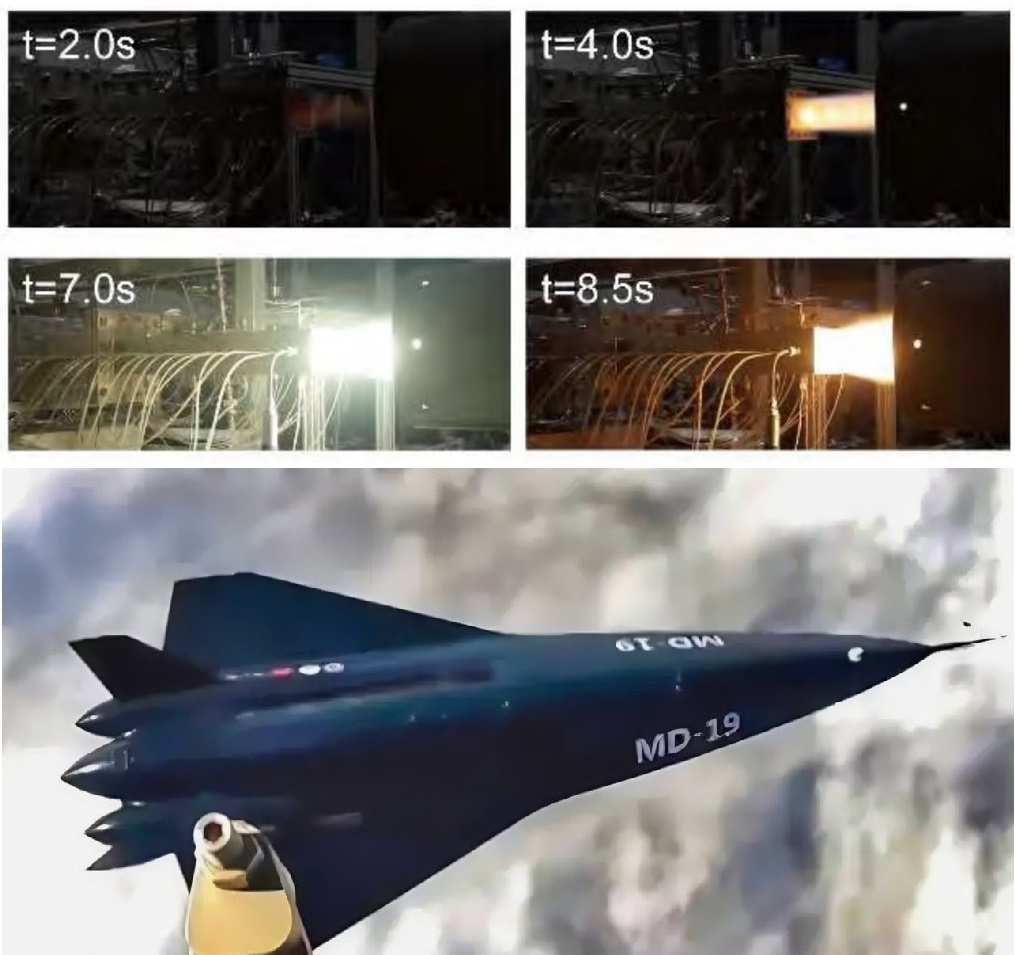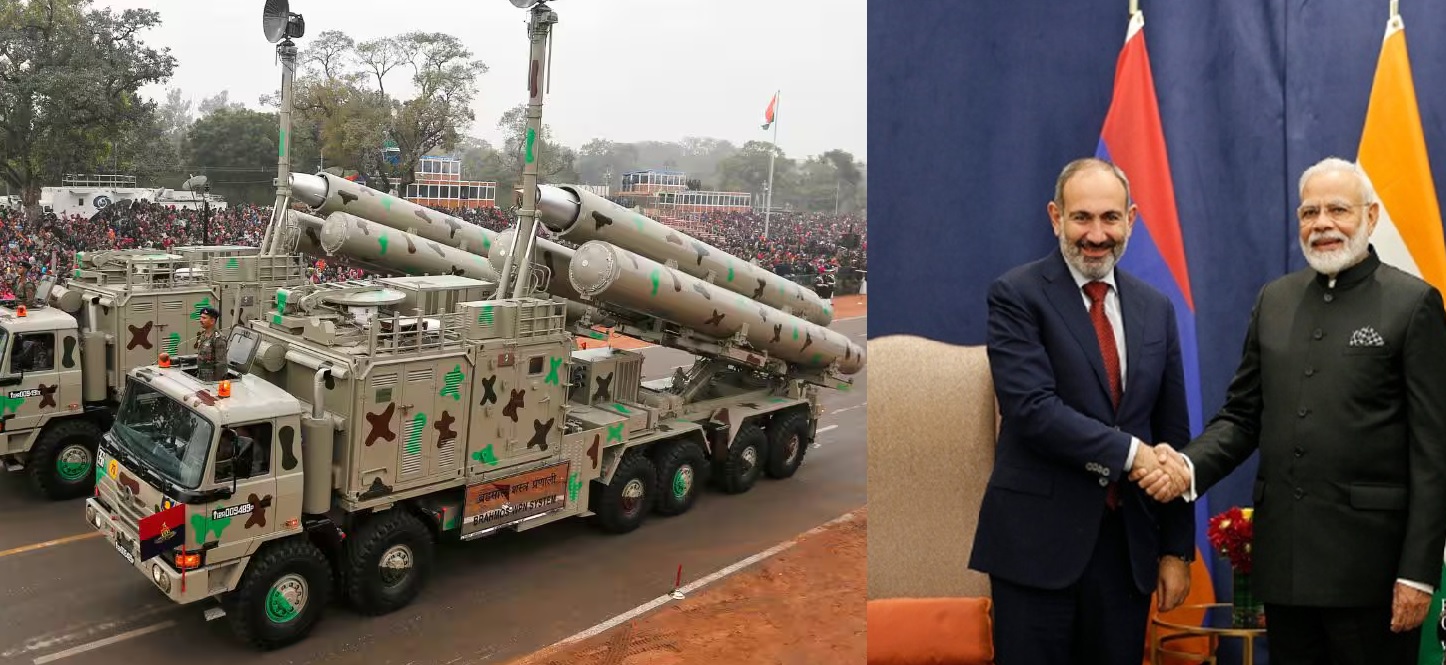Taiwan Commissions First U.S Made M1A2T Abrams Tank to Replace Aging Armor Fleet, Against China Type 99A Tank

Taipei — Taiwan’s army has officially commissioned its first battalion of U.S.-made M1A2T Abrams main battle tanks, marking a defining step in its $2.22 billion modernization drive. The new tanks are being inducted to replace the island’s aging CM-11 Brave Tiger and M60A3 Patton fleets, which have served for decades but are now technologically outdated.
The Deal and Its Timeline
The U.S. Department of State approved the sale of 108 M1A2T Abrams tanks to Taiwan in July 2019 under the Foreign Military Sales (FMS) program. Valued at approximately $2.22 billion, the package includes not only the tanks but also ammunition, recovery vehicles, and training support.
The first batch of 38 tanks was delivered in December 2024, marking the initial phase of the multi-year handover. The remaining 70 tanks are scheduled to arrive in successive shipments by 2026.
The recent commissioning marks the formal operational debut of the first Abrams battalion, symbolizing the deepening Taiwan–U.S. defense cooperation at a time of rising regional tension.
Firepower and Advanced Systems
The M1A2T is a Taiwan-specific variant of the M1A2 SEPv2 Abrams, equipped with cutting-edge systems adapted for local needs.
-
Main Gun: The tank is armed with a 120mm M256 smoothbore cannon, capable of firing APFSDS, HEAT, and multi-purpose programmable rounds.
-
Fire Control: The advanced hunter-killer fire control system allows the commander and gunner to engage multiple targets simultaneously.
-
Mobility: Powered by a Honeywell AGT1500 gas turbine engine, the M1A2T delivers over 1,500 horsepower, giving it exceptional speed and acceleration despite its weight of 70 tons.
-
Protection: The tank uses composite and modular armor—though export versions omit depleted uranium layers—to ensure superior survivability.
These attributes make the Abrams one of the world’s most formidable main battle tanks, capable of long-range precision and high protection under battlefield stress.
A War-Tested Platform
While the M1A2T variant itself has not seen combat, its parent platform — the M1 Abrams family — is among the most combat-proven tanks in modern warfare. The Abrams earned its reputation during the 1991 Gulf War, where it destroyed large numbers of Iraqi armor with minimal losses, and continued its dominance during the 2003 Iraq invasion and subsequent conflicts.
This combat legacy provides Taiwan with a battle-tested foundation that has already been refined through multiple generations of upgrades and real-world lessons.
Taiwan’s Local Ammunition Efforts
To ensure self-reliance, Taiwan’s Armaments Bureau has initiated efforts to produce 120mm tank ammunition domestically. Local manufacturing aims to reduce dependency on U.S. supply lines and secure a steady wartime ammunition reserve.
Reports suggest Taiwan is investing in automated production lines and U.S.-assisted technology transfer to begin mass production of compatible shells by the end of the decade — a critical move for sustained readiness during prolonged conflict.
Comparing Abrams to China’s Latest Tanks
Taiwan’s new M1A2T Abrams will likely face off, in theory, against the People’s Liberation Army’s (PLA) most advanced tank — the Type 99A — and its lighter cousin, the Type 15.
| Specification | M1A2T Abrams | Type 99A (China) |
|---|---|---|
| Gun | 120mm smoothbore | 125mm smoothbore (with autoloader) |
| Weight | ~70 tons | ~55–58 tons |
| Crew | 4 | 3 |
| Engine Power | 1,500 hp | 1,500 hp (diesel) |
| Armor | Composite/Reactive (export) | Composite + ERA |
| Combat Record | Extensive (Iraq, Gulf, etc.) | None (unproven in combat) |
The Type 99A has advantages in autoloader efficiency and lighter weight, while the Abrams holds a decisive edge in battlefield experience, fire-control sophistication, and crew survivability.
However, the PLA’s newer Type 15 — a lightweight 35-ton tank — is designed for rapid mobility and mountain warfare, areas less suited for the heavy Abrams. Each platform reflects its nation’s doctrine: China’s focus on mass and mobility versus Taiwan’s emphasis on survivability and quality.
Operational and Strategic Significance
The arrival of the Abrams fundamentally alters the balance of armored warfare in the Taiwan Strait. Taiwan’s previous tanks, based on 1960s and 1970s designs, lacked the digital fire control and armor protection necessary to survive against China’s newer systems. The M1A2T closes that gap significantly.
These tanks are expected to be deployed in northern Taiwan, where open terrain allows for better mobility and line-of-sight combat. Military analysts note that Abrams units could serve as a counter-invasion reserve, forming a defensive line against potential amphibious breakthroughs.
At the same time, Taiwan is aware that tanks alone cannot secure victory in modern war. The Ukraine conflict has shown that tanks must operate with air cover, drones, and anti-drone protection. Accordingly, Taiwan plans to integrate Abrams battalions into a combined-arms network alongside loitering munitions and short-range air defense systems.
A Symbol of Deterrence
Commissioning its first M1A2T Abrams battalion is more than a technological upgrade — it is a strategic signal. It demonstrates Taiwan’s resolve to defend itself with modern, credible forces, backed by U.S. support and increasing domestic production capacity.
As deliveries continue through 2026, the Abrams will gradually replace every legacy tank in frontline units. Its induction marks a turning point in Taiwan’s ground warfare capability, giving the island not just a stronger armored force — but also a clearer message of deterrence to anyone considering aggression.
✍️ This article is written by the team of The Defense News.






